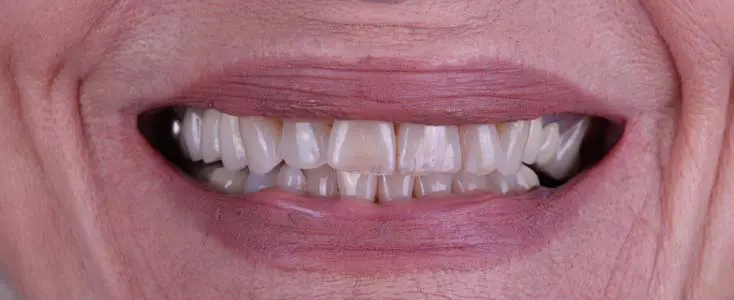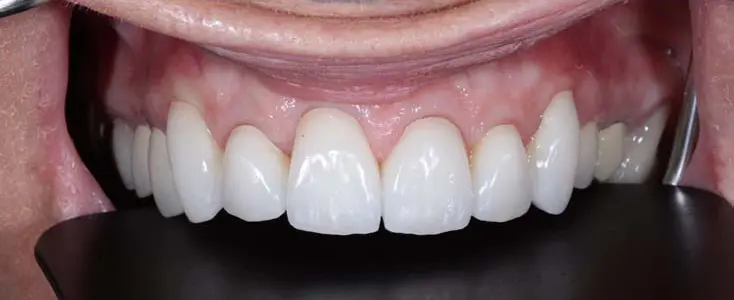How to Take Care of Your Porcelain Veneers



Everyone dreams of a beautiful smile. Porcelain veneers are one of the most popular dental procedures. However, simply getting ceramic dental build-ups is not enough. They require proper care.
Read more to find out how you can maintain the aesthetics of your smile for a long time to come.
Be Careful What You Bite
Avoid putting pressure on your front teeth. It’s not advisable to bite nuts/ice, shell seeds, chew nails, open bottles, and so on.
These actions place too much stress on your teeth and can lead to microcracks, chips, and other defects in ceramic dental build-ups. Remember that damaged resin coverings cannot be repaired, only replaced with a new one.
Try to Avoid Certain Foods
Fibrous or sticky foods are not recommended. For example, patients with veneers should avoid consuming tough meats and caramel frequently. Such foods can get stuck between the teeth, potentially leading to cavities beneath the veneers.
If you have temporary veneers, steer clear of products containing dyes. For instance, red wine, tea, and coffee may stain temporary ceramic dental build-ups.
Avoid Temperature Fluctuations in Your Food
Sudden changes in temperature can damage veneers. Therefore, it’s not advisable, for example, to consume ice cream followed by hot coffee. Such actions can lead to the formation of cracks, just like on natural tooth enamel.
Many experts suggest that resin coverings are strong enough to withstand abrupt shifts from cold to hot (and vice versa). However, the composite to which they are attached may behave unpredictably, potentially causing the veneers to become detached.
Avoid Smoking
Smokers may bid farewell to their snow-white smile, even if they have veneers. The hot smoke encourages the formation of microcracks on the veneers. Resins found in cigarettes penetrate the damage and stain ceramic dental build-ups yellow.
The same applies to vaping. E-liquid contains nicotine, a potent pigmentation agent. Additionally, vapes often contain flavored dyes that leave stains on the teeth.
Maintain Regular Oral Hygiene
Use a soft-bristle toothbrush. A toothbrush with hard bristles can scratch the surface of the veneers.
Use non-abrasive toothpaste. Large abrasive particles in toothpaste can also scratch the veneers.
Use Additional Tools
Dental floss helps clean the spaces between your teeth.
Why is good oral hygiene so important?
How can you combat the consequences of poor oral hygiene?
I recommend deep teeth cleaning, which includes the removal of supragingival and subgingival deposits and disinfection of periodontal pockets.
It’s important to us that our patients feel comfortable during the procedure, so we offer treatment under sedation. You are completely relaxed and do not experience discomfort.
Gum Disease Prevention
If something is bothering you, seek immediate professional attention.
Prevention allows for the timely avoidance of many oral cavity diseases and can also reduce dental treatment costs. Therefore, it’s important not to ignore warning signs such as inflammation, pain, or oral mucosa swelling.
Visit the dentist every 6-12 months
Even meticulous home care cannot ensure quality oral hygiene. We recommend regular professional hygiene visits to the dentist, especially if you enjoy drinking coffee, smoke, and frequently consume staining foods.
Professional dental hygiene consists of:
Air Flow – effectively removes soft and pigmented plaque, including from the interdental areas.
How can you maintain the aesthetics of your veneers for a long time to come?
Get regular professional dental hygiene treatments. This will reduce the risk of gum inflammation and other dental conditions.
We use the modern piezoelectric scaler – Cavitron Ultrasonic Scaling System. Thanks to this tool, the cleaning process is as gentle and comfortable as possible for the patient.
How Can You Take Care of Veneers with Bruxism?
Smokers may bid farewell to their snow-white smile, even if they have veneers. The hot smoke encourages the formation of microcracks on the veneers. Resins found in cigarettes penetrate the damage and stain ceramic dental build-ups yellow.
The same applies to vaping. E-liquid contains nicotine, a potent pigmentation agent. Additionally, vapes often contain flavored dyes that leave stains on the teeth.

